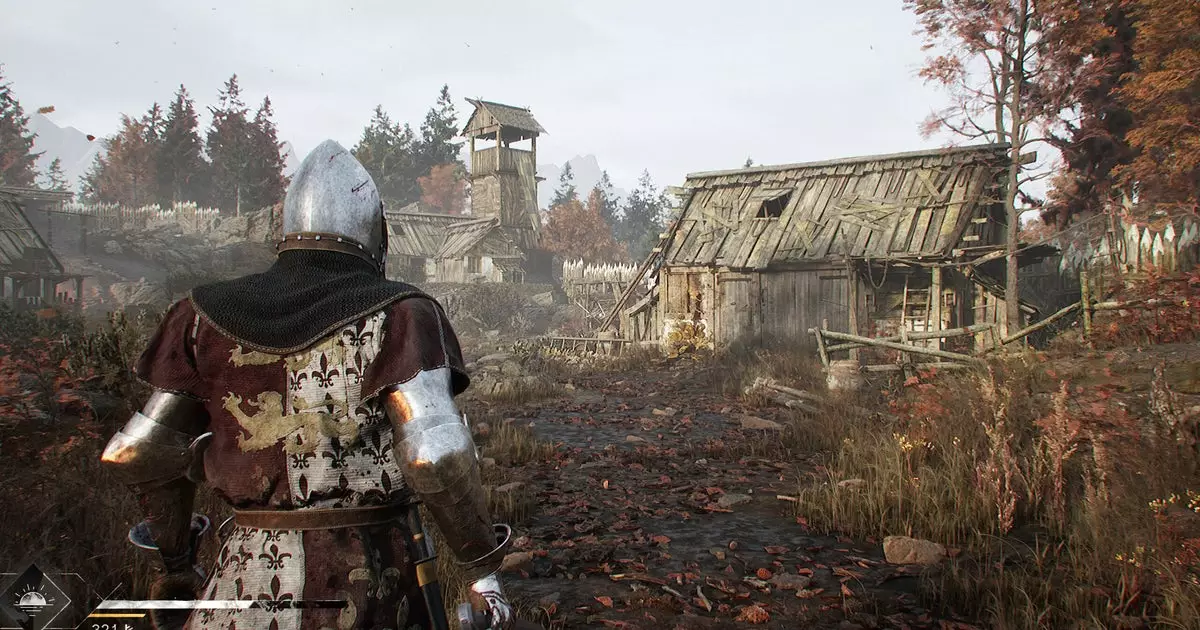The gaming landscape is perpetually evolving, filled with innovation and ultimately, the unknown. Among the myriad entries vying for attention, Haenir’s Blight: Survival stands out as a curiously grotesque concoction of action and horror that plunges players into a land trapped in turmoil, beset by the rampant Blight. Watching this game develop feels akin to peering into a bubbling cauldron—each update brings intrigue, yet raises more questions than it answers. Initially birthed from the ambitions of a two-person team, any interaction with its creators has been elusive, leaving interested parties like myself yearning for insights yet met with silence.
Though caution flags emerge over its uncertain territory—Blight remains a work in progress, hidden away in the depths of its miasmic world. Recent glimpses afforded by asset reveals and a new biome suggest that the devs are not sitting idle, yet the shadows of doubt linger, primarily due to the obscured gameplay dynamics that constantly shift within its moody landscape.
Embracing the Absurdity of Conflict
Set against a backdrop of two warring kingdoms, Blight: Survival invites exploration amidst chaos. Players embark on a treacherous journey in a narrative that unfolds like a gruesome fairy tale, where the line between hero and villain blurs thick with swamp sludge. As a graverobber among legions of reanimated foes, your task is nebulous: find loot, fend off the undead, and ultimately obliterate the Blight itself. Yet, one must ponder—could diplomacy serve as the more sensible approach to peace? The game, however, yields to the age-old trope that complexities of the human condition rarely find their resolutions on a battlefield, and in this digital universe, the path of violence seems more fitting.
Animation or commentary? Here, gameplay doesn’t lend itself to philosophical musings. Rather, it dares to engage players in visceral emotional responses—pitting them against grotesque adversaries and relentless environments. It offers a license to unleash pent-up fury with swords glinting sharply in a murk of decay. This acknowledgement of escalation—the need to fight rather than reason—might not provide the closure many seek, but it reflects an essential dark allure many gamers crave.
The Allure of the Swamp Aesthetic
Blight’s commitment to a swamp aesthetic draws clear inspiration from titles such as A Plague Tale: Innocence and Hunt: Showdown, but it seems to dive deeper into that grotesque pool of murky visuals. It’s a domain that grotesquely fascinating, enveloping the player in its foul embrace, littered with dilapidated chapels and treacherous landscapes that beg for exploration. The swamp is both a character and a stage—a living, breathing entity that seems intent on consuming all who venture too deeply. The opportunity to get lost resonates strongly with those who find beauty in the unsettling. The question echoes through the trees: “How far are you willing to go?” A testament to the game’s push-pull relationship with its audience.
In an age of polished and sparkling environments, Blight’s rough edges turn into a compelling feature—seducing players who derive joy from navigating through lifelike decay. The grittiness transcends mere visuals; it challenges players to confront discomfort as they hurdle over obstacles not just in-game but reflecting shadows of their perseverance.
Direction in Combat: A Double-Edged Sword
As showcased in the trailer, an aspect garnering my immediate attention is the directional combat mechanism that promises a tactile experience, allowing players to manipulate their weaponry with precision. The successful execution of this mechanic can make or break an action game; thus, my hope lingers as I remain cautiously optimistic. Many developers have faltered in presenting such systems, yet the successful implementation in titles like For Honor gives some grounding for optimism.
However, as enticing as the concept appears, it risks falling into the trap of over-complication. Players must balance the engaging nature of this combat with straightforward navigation through the chaos surrounding them. Clear, responsive mechanics will serve as the lifeblood of the experience, and if Blight nails its combat, it could carve out a niche among its contemporaries.
Blight: Survival wears its gross and gritty identity proudly, navigating through shadows that blur the line between horror and the grotesque. It invites players to embrace the chaotic ambiguity wrought by war while allowing room for exploration and tactile combat, promising a rich yet challenging experience amid the stench of decay.


Leave a Reply